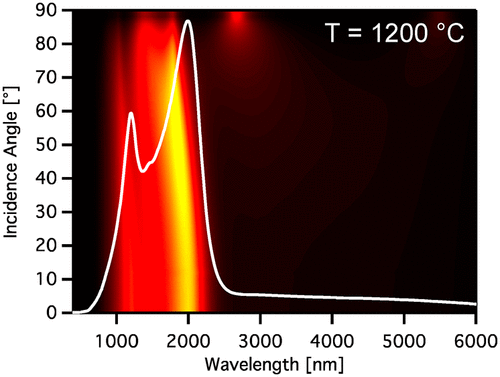Our paper describing composite nanomaterials for selective thermal emission that actually survive high temperature conditions is now published at ACS Applied Materials and Interfaces!
Nari Jeon, David Mandia, Stephen Gray, Jonathan J. Foley IV, Alex Martinson
ACS Appl. Mater. Interfaces
2019

The efficiency of a thermophotovoltaic (TPV) system depends critically upon the spectral selectivity and stability of an emitter, which may operate most effectively at temperatures in excess of 1000 °C. We computationally design and experimentally demonstrate a novel selective emitter design based on multilayer nanostructures, robust to off-normal emission angles. A computational search of the material and temperature compatibility space of simple emitter designs motivates new material classes and identifies several promising multilayer nanostructure designs for both TPV absorber and emitter applications. One such structure, comprising a thin (<100 nm) tunable TixAl1–xN (TiAlN) absorber and refractory oxide Bragg reflector is grown on W metal foil. In agreement with simulations, the emitter achieves record spectral efficiency (43.4%) and power density (3.6 W/cm2) for an emitter with at least 1 h of high temperature (>800 °C) operation.